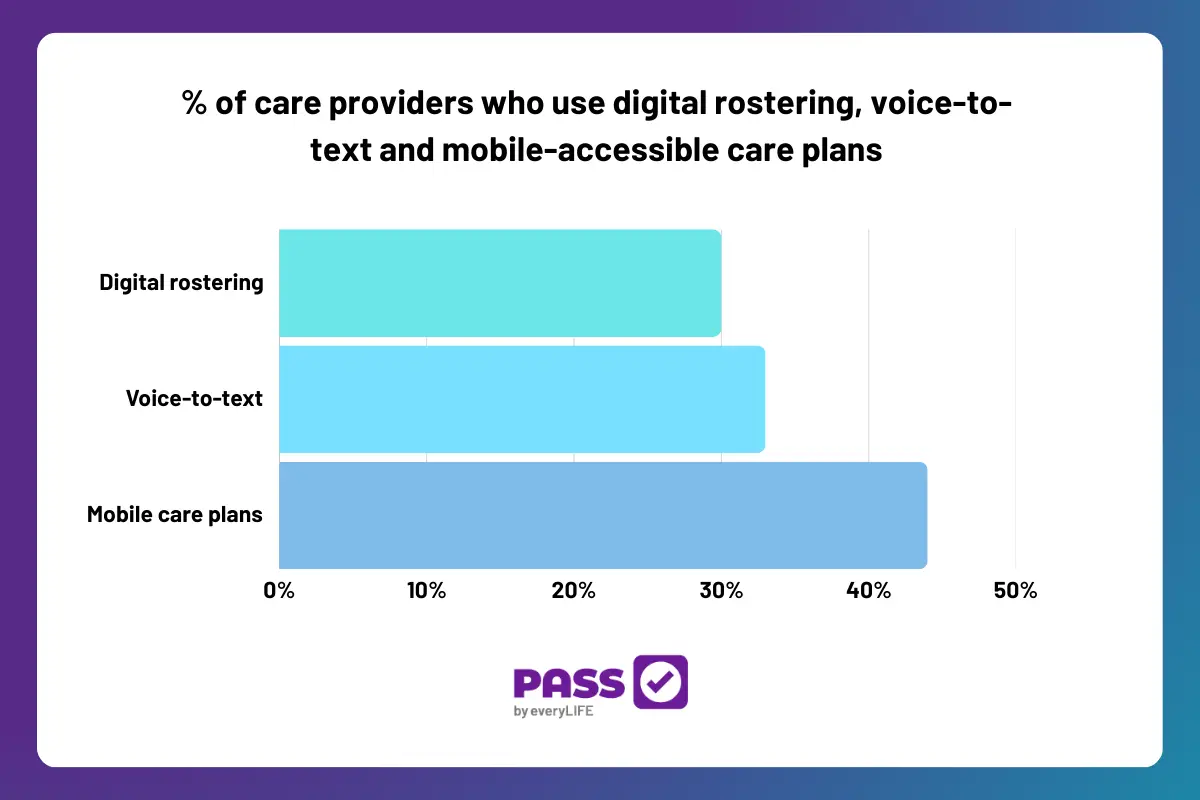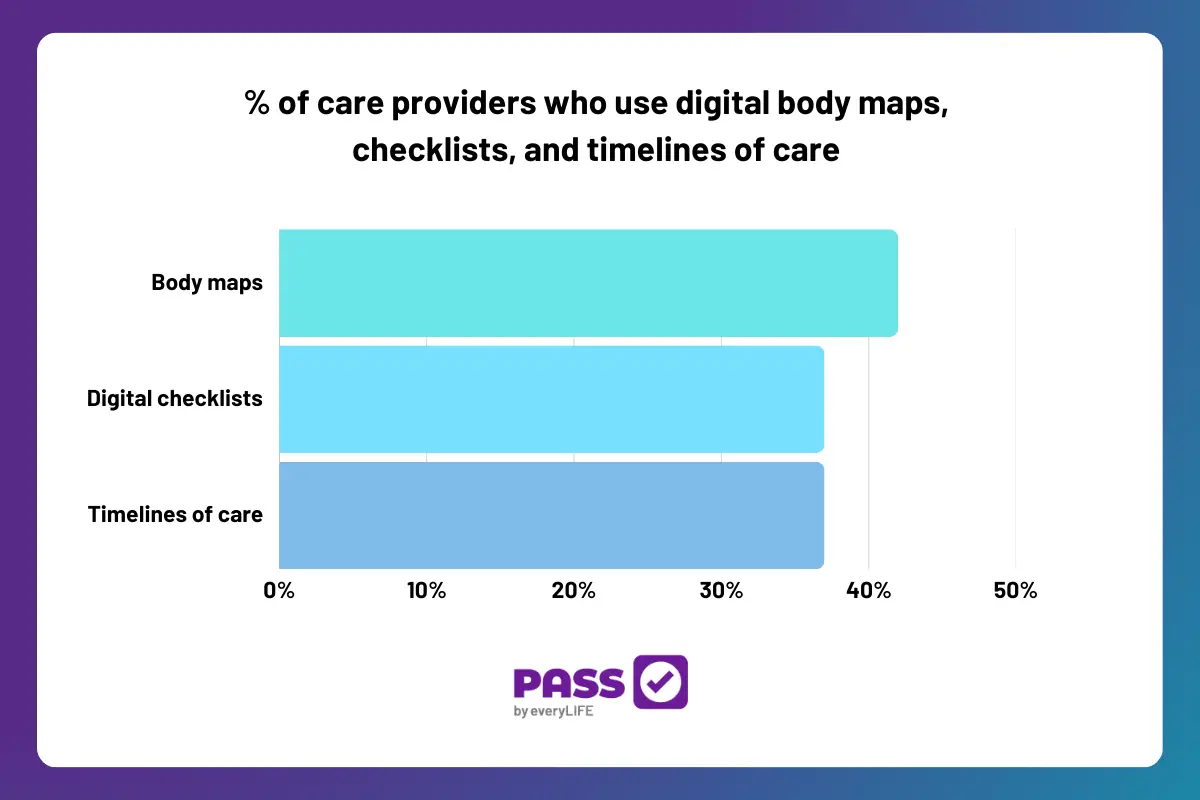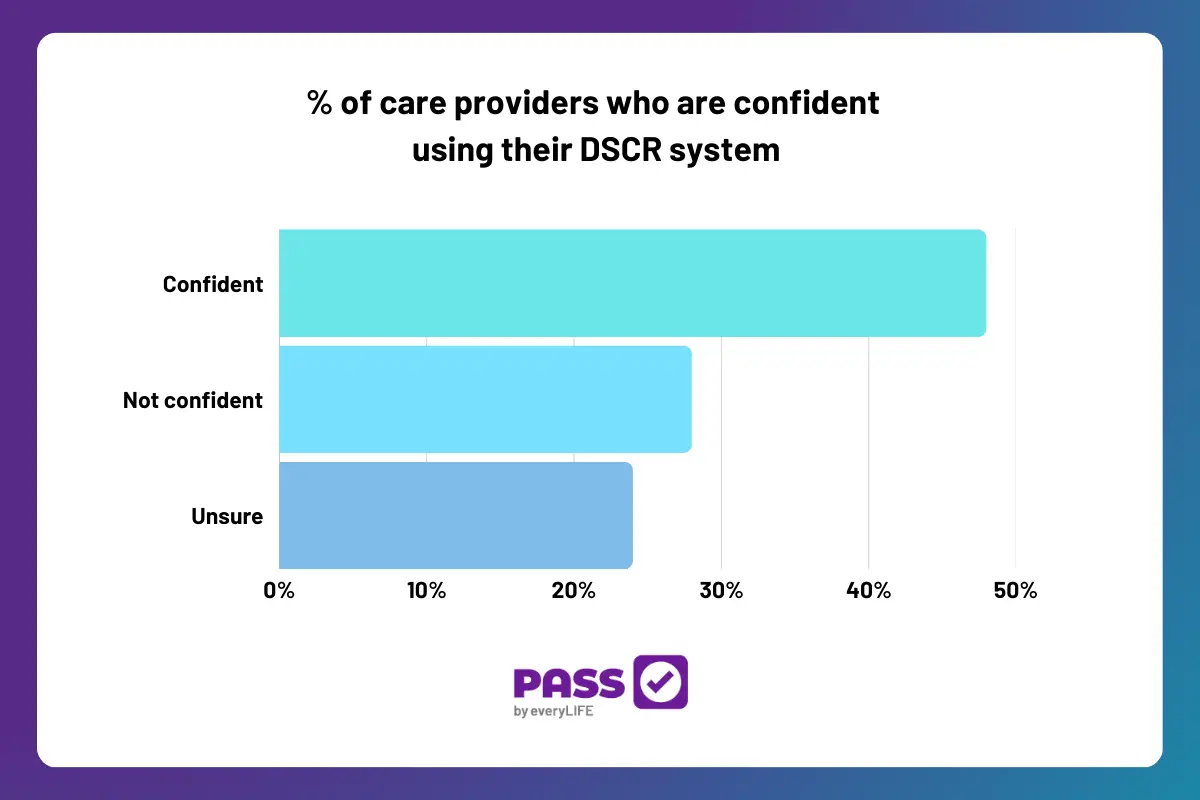The 2025 DSCR survey results are in: what digital tools are care providers still missing?
We’ve just released the results of our 2025 sector-wide Digital Social Care Record (DSCR) survey, uncovering major gaps in access to essential digital tools across various DSCR systems.
Despite progress in digital adoption, many care providers still struggle to access key features like GP Connect, electronic medication administration records (eMAR), and a friends and family portal – all tools that can transform efficiency, compliance, and care quality.
This comes as DSCR use continues to rise, with government data showing that 72% of CQC-registered adult social care locations in England had a DSCR in place by July 2024, up from 57.4% in July 2023.

While progress is being made, the survey findings highlight that simply having a DSCR system is not enough. Providers need access to the right digital tools to truly transform care delivery.
The survey evaluates whether they have the digital tools and support needed to maintain high-quality care, especially amid ongoing challenges in recruitment, staff retention, and funding across the sector.
Let’s dive in to the results…

Digital adoption in care: Strong progress, but critical gaps remain
The 2025 DSCR Survey, completed by 447 care providers across England, assesses sector-wide adoption of digital tools, regardless of provider or software used. It highlights both progress and pressing challenges in digital adoption across social care.
Confidence in digital systems is growing, with 48% of providers feeling secure in their care management technology.
Many have embraced key digital tools, including digital care documentation, incident reporting, and digital care planning software – demonstrating the sector’s commitment to safer, more compliant, and efficient care delivery.
However, the survey also exposes major gaps in access to essential digital tools:
- Only 38% of providers can access GP records digitally, despite GP Connect being live in England for seven years. This is missed opportunity to improve safety with real-time access to prescriptions, allergies, and medical history.
- Just 39% use eMAR, meaning the majority still rely on non-digital medication administration, increasing the risk of errors and compliance issues.
- Nearly 40% of providers do not offer a friends and family portal, like openPASS, despite growing demand for transparency in care.

More broadly, core functionalities like digital rostering, body maps, and care journey tracking remain underused across the sector, with fewer than half of providers leveraging these tools.
Solutions like PASS already offer these essential tools, yet broader adoption is key to improving care quality and efficiency.
Key findings from the 2025 DSCR Survey
GP patient data integration: Limited access despite seven years of GP Connect
Despite GP Connect being live in England for seven years and its potential to significantly improve safety with instant, secure access to prescriptions, allergies, and medical history, only 38% of care providers report having digital access to GP data. This gap limits providers’ ability to make informed, real-time care decisions and highlights the urgent need for broader integration across the sector.
eMAR: A missed safeguard against medication errors
While 39% of care providers use eMAR to improve medication safety and accuracy, 44% still rely on non-digital methods. With medication errors a major risk in care, wider adoption of eMAR could prevent mistakes, ensure timely doses, and provide real-time tracking – enhancing both safety and compliance.

Friends & family portals: Transparency still lags behind demand
Nearly half (47%) of care providers offer families real-time digital access to their loved one’s care through portals like openPASS, improving transparency and peace of mind. However, 38% still don’t provide this access, with 15% unsure – showing a clear gap between availability and growing demand for digital care insights. Wider adoption could strengthen trust, reduce admin for care teams, and keep families better informed.
Digital rostering: A missed chance to improve efficiency
Only 30% of care providers use digital rostering, while 49% still rely on manual scheduling. This increases admin time and makes it harder to allocate staff effectively. Wider adoption could streamline workforce management and improve care continuity.
Voice-to-text: A time-saving tool underused
Just 33% of providers use voice-to-text for notetaking, while 47% still rely on manual entry. This tech could speed up record-keeping and reduce admin, yet awareness remains low.
Mobile care plans: Essential for responsive care
44% of providers use mobile-accessible care plans, but 35% do not, and 21% are unsure. Without mobile access, updates can be delayed, leading to inefficiencies. Real-time access improves coordination and accuracy.

Body maps: A vital tool for health monitoring
42% of providers use digital body maps, while 41% do not. This means missed opportunities to track conditions like pressure ulcers. Digital body mapping enhances accuracy and early detection.
Digital checklists: A smarter way to manage compliance
Only 37% of providers use digital checklists for onboarding and compliance, while 45% still rely on manual processes. This raises risks of missed steps and delays. Digital tools ensure consistency and automate reminders.
Visual timelines: A clearer view of care journeys
Only 37% of providers use visual timelines to track care journeys, while 44% do not. This tool helps identify trends and improve continuity but remains underused.

24/7 support: A safety net many care providers lack
42% of providers have 24/7 DSCR support, but 36% do not, leaving them vulnerable to system issues. Round-the-clock assistance reduces disruptions and ensures reliability.
Customisable templates: Key to better compliance
44% of providers use customisable care templates, but 33% do not, and 23% are unsure. Without this flexibility, meeting regulatory standards and delivering person-centred care can be more challenging.
Digital incident reporting: A gap in safety and compliance
45% of providers use digital incident reporting, while 38% do not. Without digital records, tracking trends and ensuring compliance becomes harder.
Confidence in care systems: A mixed picture
48% of providers are confident in their care system, but 28% are not, and 24% are unsure. Gaps in usability and training may be affecting trust in digital tools.

NFC/QR check-ins: Strengthening accountability
41% of providers use NFC or QR check-ins, while 38% do not, increasing the risk of missed visits and inaccurate records. Digital verification ensures accurate tracking and reduces disputes.
User-friendly systems: Accessibility still lacking
47% of providers use accessible systems, but 32% do not, creating barriers for staff with additional needs. Prioritising accessibility ensures all staff can use technology effectively.
Want to explore these features in more detail? Visit our all Care Management Software Features page.
The future of digital social care: What’s next?
The survey results highlight both progress and opportunities in digital adoption across social care. While many providers are embracing key technologies, gaps remain in critical areas like GP data access, medication management, and family engagement. Recognising these challenges allows care providers to proactively strengthen their digital capabilities, ensuring better efficiency, compliance, and quality of care.
Expanding adoption of digital tools will be key to enhancing efficiency, safety, and care quality at scale. These insights also support the development of smarter, more integrated digital solutions, tailored to the sector’s evolving needs.
Continue your digital care journey with PASS 🚀
It’s never been easier to get started with PASS care management software. Book your free tour, have a chat with our friendly team, and see how PASS could transform your care service.

